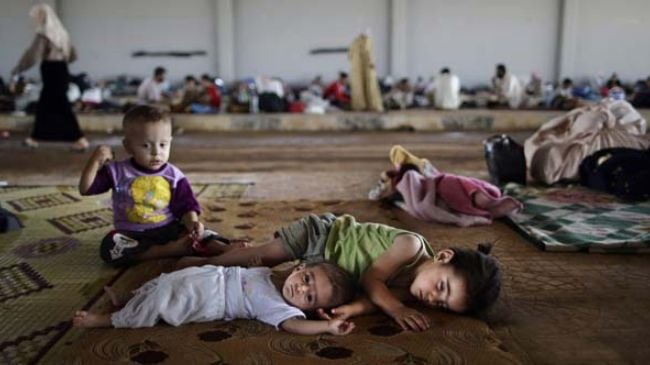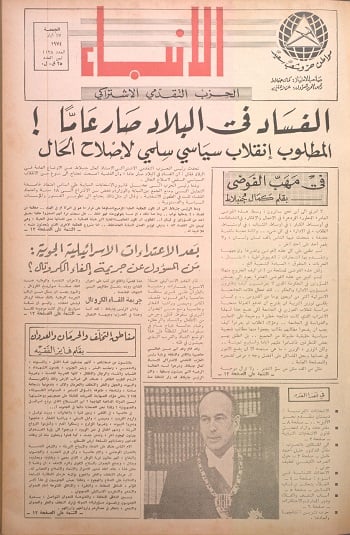Don’t forget the children of Syria’s war
Rami G. Khouri / The Daily Star
16 مارس 2016

On Monday the world had a clear view of the top and bottom levels of war and the forces that drive history – namely world powers that play with smaller states and ordinary men, women and children, whose suffering launches them onto journeys of dehumanization that always end badly.
In Moscow, Russian President Vladimir Putin announced the withdrawal of most Russian military forces from Syria. In Amman, the UNICEF regional representative released a report about the impact on children of the war in Syria.
This stark lesson in how history happens captures the hard realities of heartless foreign powers and helpless local citizens that have shaped the Arab world over recent decades. These top and bottom levels of war’s impact help us make sense of what has been happening in the Arab world for a long time now.
The Russian action is the easier to grasp. Big powers throw their weight around smaller countries whenever they need to make a point. That point can be related to domestic credibility, regional standing, global perceptions, genuine national strategic interests or just their sense of honor and respect that is calculated in the dead bodies of Syrians and many other helpless people in developing countries of the South.
For centuries, great powers and their armies have marched in and out of the Middle East at will, usually oblivious to what they leave behind, as the conflicts in Afghanistan, Syria, Libya and Iraq today confirm. Such wars are not only the result of big-power imperialism. In fact usually they can be traced to local dictatorships such as those of the Baath parties in Syria and Iraq that ravaged those societies.
The important report by UNICEF captured the street- and family-level picture of how societies disintegrate, as they weaken and finally shatter under the unbearable weight of years of warfare, siege, starvation, exile and death. The total helplessness and vulnerability of citizens reflect the combined consequences of the two great scourges of their existence: domestic dictatorships and foreign military interventions. As a dozen foreign and regional powers move in and out of Syria with their arms shipments and their own troops, the lasting damage can be measured in the criteria of human de-development and despair that UNICEF’s report mentioned: the lingering, even lasting, impact of war on Syria’s children.
The raw figures are bad enough, but they do not capture the full damage and future threats of what happens when large numbers of human beings are dehumanized in their own societies, often by their own government or people. The raw figures show that 3.7 million children born in Syria since the war started five years ago, including 306,000 refugees born in exile, have known only war, fear and displacement. Some 15,000 unaccompanied or separated children have crossed Syria’s borders in their desperate quest to stay alive.
Children under siege or in exile are being forced into marriage, for girls at the age of 11 or 12 years in some cases. Boys as young as 5 and 6 are working to scrape enough money to help their families stay alive. Some girl brides are reportedly giving birth at the age of 12 or 13. In the areas of heaviest conflict, virtually all children (98 percent of those examined) show signs of profound emotional or psychological distress. Once vanquished or minimized diseases such as polio, hepatitis A, measles and leishmaniasis have returned.
But the most troubling consequence of war is not just that it kills, degrades, or permanently scars people; it is that is spawns a cohort of emotionally disfigured youth whose loss of dignity often leads to destructive behavior that perpetuates violence. These youth first withdraw from normal social interactions, and subsequently often re-engage in society as hardened gang or militia members who join the war in order to regain a life and compensate for how the war ruined their lives. UNICEF’s medical surveys show that about one in five teenagers feel such high frustrations in their family situations.
This slow, steady, numbing dehumanization of young Syrians measured in hundreds of thousands of lives is mirrored in similar trends in other countries at war in the Arab world.
Most distressingly, this also occurs in marginalized areas of mass hopelessness and lack of life opportunities in peri-urban and rural regions of Arab countries not at war; this is what sparked the Arab uprisings five years ago, and keeps millions of men and women fighting for their lives and a better future for their children.
 عن أمل جنبلاط المتجدد: لبنان يستحق النضال
عن أمل جنبلاط المتجدد: لبنان يستحق النضال
 صحافيون أم عرّافون!
صحافيون أم عرّافون!
 ماذا يجري داخل أروقة بيت الكتائب المركزي؟
ماذا يجري داخل أروقة بيت الكتائب المركزي؟


 عن الخرائط التي تُرسم والإتفاقات التي تتساقط!
عن الخرائط التي تُرسم والإتفاقات التي تتساقط!
 “الإنحراف في الحياة”/ بقلم كمال جنبلاط
“الإنحراف في الحياة”/ بقلم كمال جنبلاط
 هاشتاغ #صار_الوقت يحل أولاً في حلقة جنبلاط
هاشتاغ #صار_الوقت يحل أولاً في حلقة جنبلاط
 طاولة نقاش عن أزمة الصحافة في جامعة AUST
طاولة نقاش عن أزمة الصحافة في جامعة AUST
 عبدالله: ليظهر لنا وزير مكافحة الفساد حرصه في صفقات البواخر والفيول
عبدالله: ليظهر لنا وزير مكافحة الفساد حرصه في صفقات البواخر والفيول
 عبدالله: غريب أمر وزارة مكافحة الفساد!
عبدالله: غريب أمر وزارة مكافحة الفساد!

 Comment to Uri Avnery: How Sad What Is Looming Ahead
Comment to Uri Avnery: How Sad What Is Looming Ahead
 “Not Enough!”
“Not Enough!”
 … لمن لم يقرأ يوسف البعيني/ بقلم وسام شيّا
… لمن لم يقرأ يوسف البعيني/ بقلم وسام شيّا
 كمال جنبلاط في مولده الأول بعد المائة: تعاليمه وأفكاره ما زالت الحلّ/بقلم عزيز المتني
كمال جنبلاط في مولده الأول بعد المائة: تعاليمه وأفكاره ما زالت الحلّ/بقلم عزيز المتني
 رئيس حزب/ وليس (… سابقاً)/ بقلم د. خليل احمد خليل
رئيس حزب/ وليس (… سابقاً)/ بقلم د. خليل احمد خليل
 التوازن السياسي في لبنان
التوازن السياسي في لبنان
 لبنان… مشاريع انقلابية مؤجلة
لبنان… مشاريع انقلابية مؤجلة
 جنبلاط وحَمَلة أختام الكاوتشوك
جنبلاط وحَمَلة أختام الكاوتشوك
 Le Liban est un symbole de tolérance
Le Liban est un symbole de tolérance
 Our Automated Future
Our Automated Future
 The True Origins of ISIS
The True Origins of ISIS
 Les Misérables vs. Macron
Les Misérables vs. Macron
 عذراً أيها المعلم/ بقلم مهج شعبان
عذراً أيها المعلم/ بقلم مهج شعبان
 رساله الى المعلم / بقلم ابو عاصم
رساله الى المعلم / بقلم ابو عاصم
 إلى روح القائد والمعلم كمال جنبلاط/ بقلم أنور الدبيسي
إلى روح القائد والمعلم كمال جنبلاط/ بقلم أنور الدبيسي
 أسرار وعناوين الصحف ليوم الجمعة 14 كانون الاول 2018
أسرار وعناوين الصحف ليوم الجمعة 14 كانون الاول 2018














